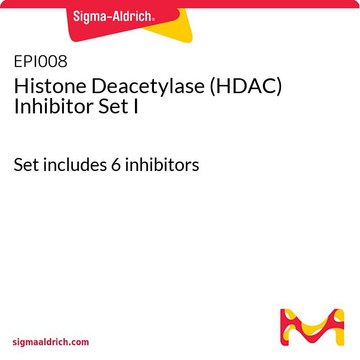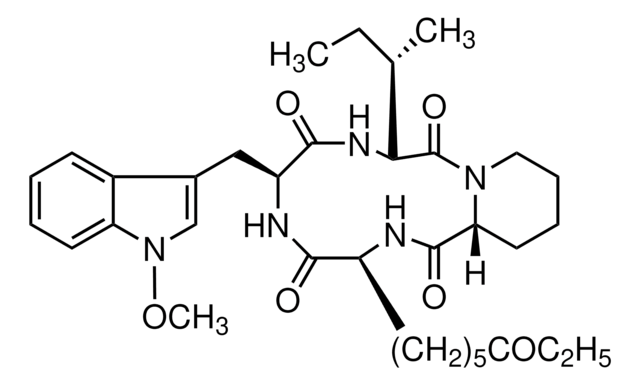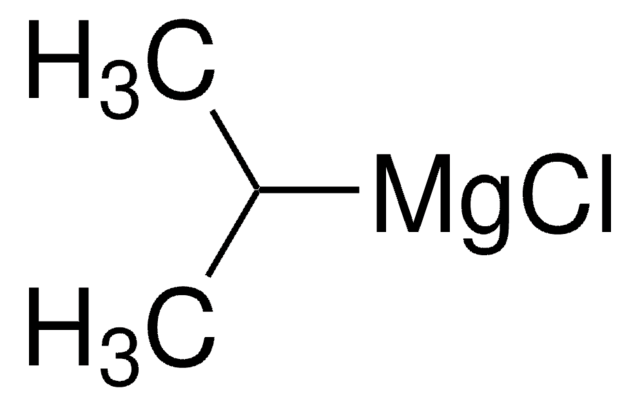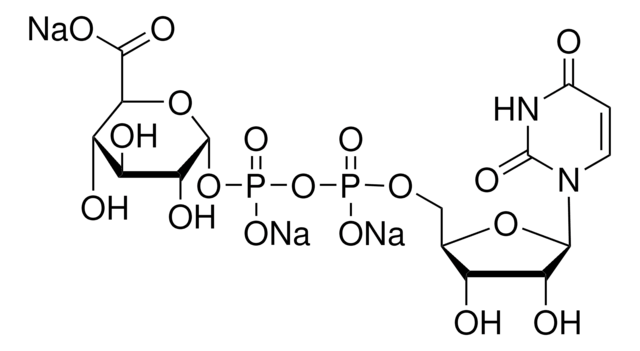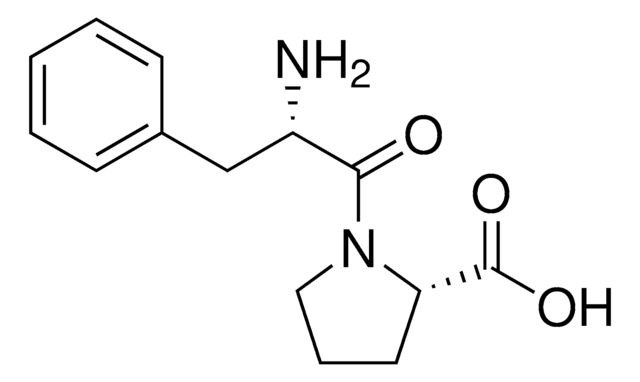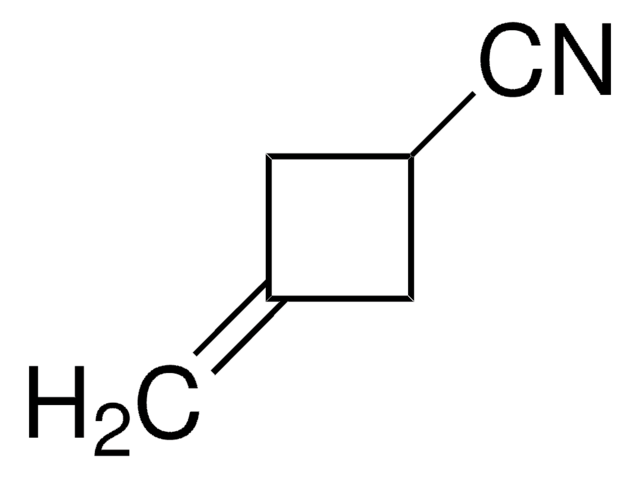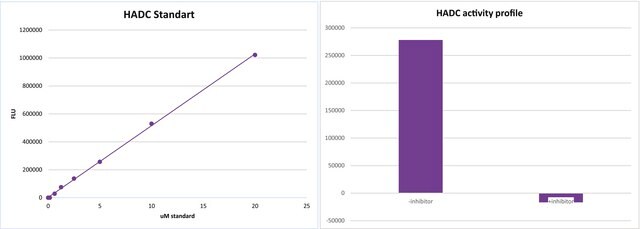T2580
Trapoxin A
≥98% (HPLC), from Helicoma ambiens
Synonyme(s) :
Cyclo((S)-phenylalanyl-(S)-phenylalanyl-(R)-pipecolinyl-(2S,9S)-2-amino-8-oxo-9,10-epoxydecanoyl), RF 1023A
About This Item
Produits recommandés
Source biologique
Helicoma ambiens
Niveau de qualité
Pureté
≥98% (HPLC)
Forme
solid
Solubilité
DMSO: soluble 0.9-1.10 mg/ml, clear, colorless to faintly yellow (may be further diluted 20 fold in H2O)
chloroform: soluble
methanol: soluble
Conditions d'expédition
dry ice
Température de stockage
−20°C
InChI
1S/C34H42N4O6/c39-29(30-22-44-30)18-9-3-8-16-25-31(40)36-26(20-23-12-4-1-5-13-23)32(41)37-27(21-24-14-6-2-7-15-24)34(43)38-19-11-10-17-28(38)33(42)35-25/h1-2,4-7,12-15,25-28,30H,3,8-11,16-22H2,(H,35,42)(H,36,40)(H,37,41)/t25-,26-,27-,28+,30-/m0/s1
Clé InChI
GXVXXETYXSPSOA-UFEOFEBPSA-N
Application
- to study its effects on the inhibition of histone deacetylase 11 (HDAC11)
- to study its effects on the inhibition of HDAC3 in human cell lines
- to study its effects on the inhibition of HDAC6 in rat pyramidal neurons
Actions biochimiques/physiologiques
Caractéristiques et avantages
Notes préparatoires
Produit(s) apparenté(s)
Mention d'avertissement
Danger
Mentions de danger
Conseils de prudence
Classification des risques
Acute Tox. 3 Oral
Code de la classe de stockage
6.1C - Combustible acute toxic Cat.3 / toxic compounds or compounds which causing chronic effects
Classe de danger pour l'eau (WGK)
WGK 3
Point d'éclair (°F)
Not applicable
Point d'éclair (°C)
Not applicable
Certificats d'analyse (COA)
Recherchez un Certificats d'analyse (COA) en saisissant le numéro de lot du produit. Les numéros de lot figurent sur l'étiquette du produit après les mots "Lot" ou "Batch".
Déjà en possession de ce produit ?
Retrouvez la documentation relative aux produits que vous avez récemment achetés dans la Bibliothèque de documents.
Articles
Epigenetic modifications are thought to occur through two key interconnected processes—DNA methylation and the covalent modification of histones.
Contenu apparenté
We offer a variety of small molecule research tools, such as transcription factor modulators, inhibitors of chromatin modifying enzymes, and agonists/antagonists for target identification and validation in gene regulation research; a selection of these research tools is shown below.
Notre équipe de scientifiques dispose d'une expérience dans tous les secteurs de la recherche, notamment en sciences de la vie, science des matériaux, synthèse chimique, chromatographie, analyse et dans de nombreux autres domaines..
Contacter notre Service technique